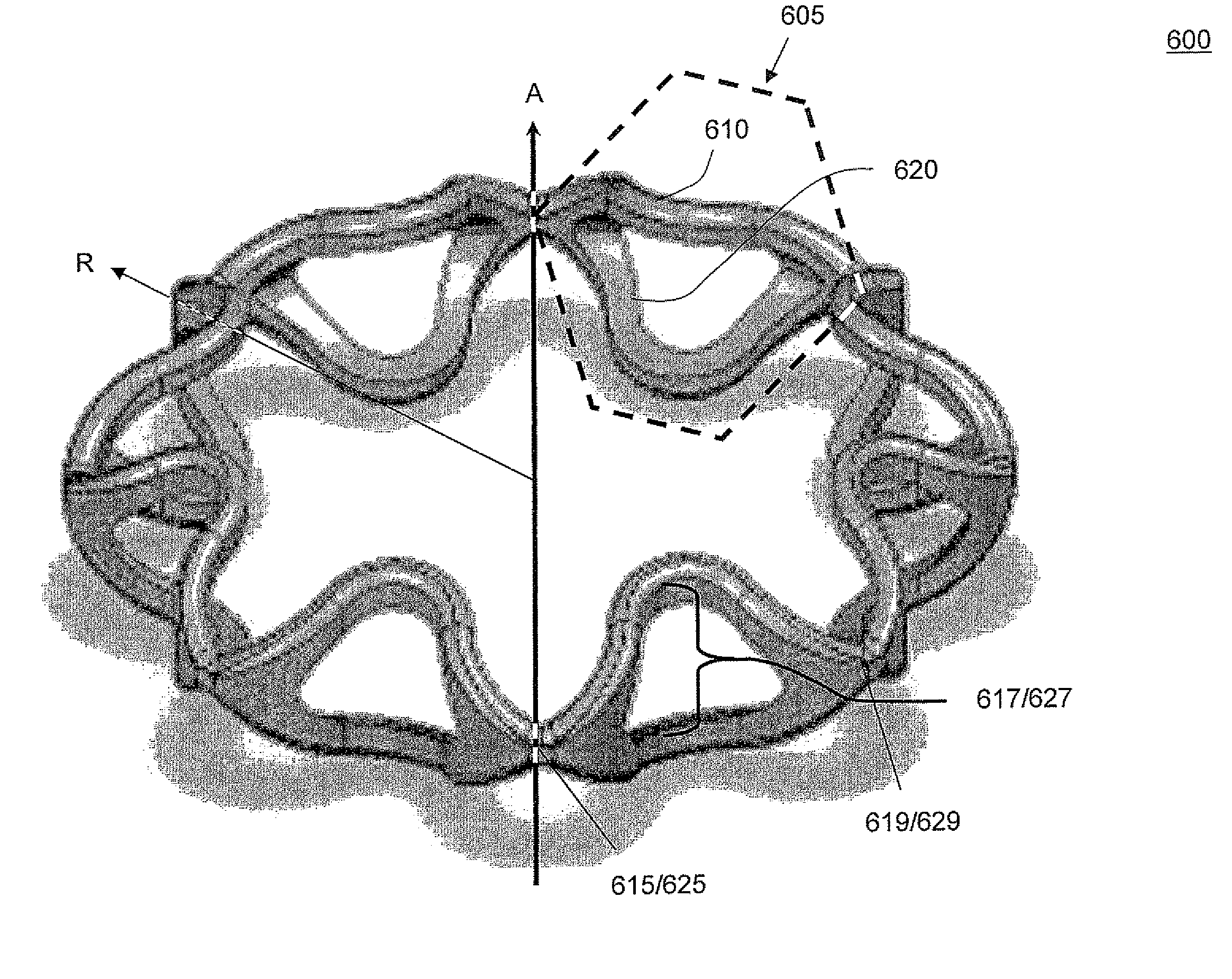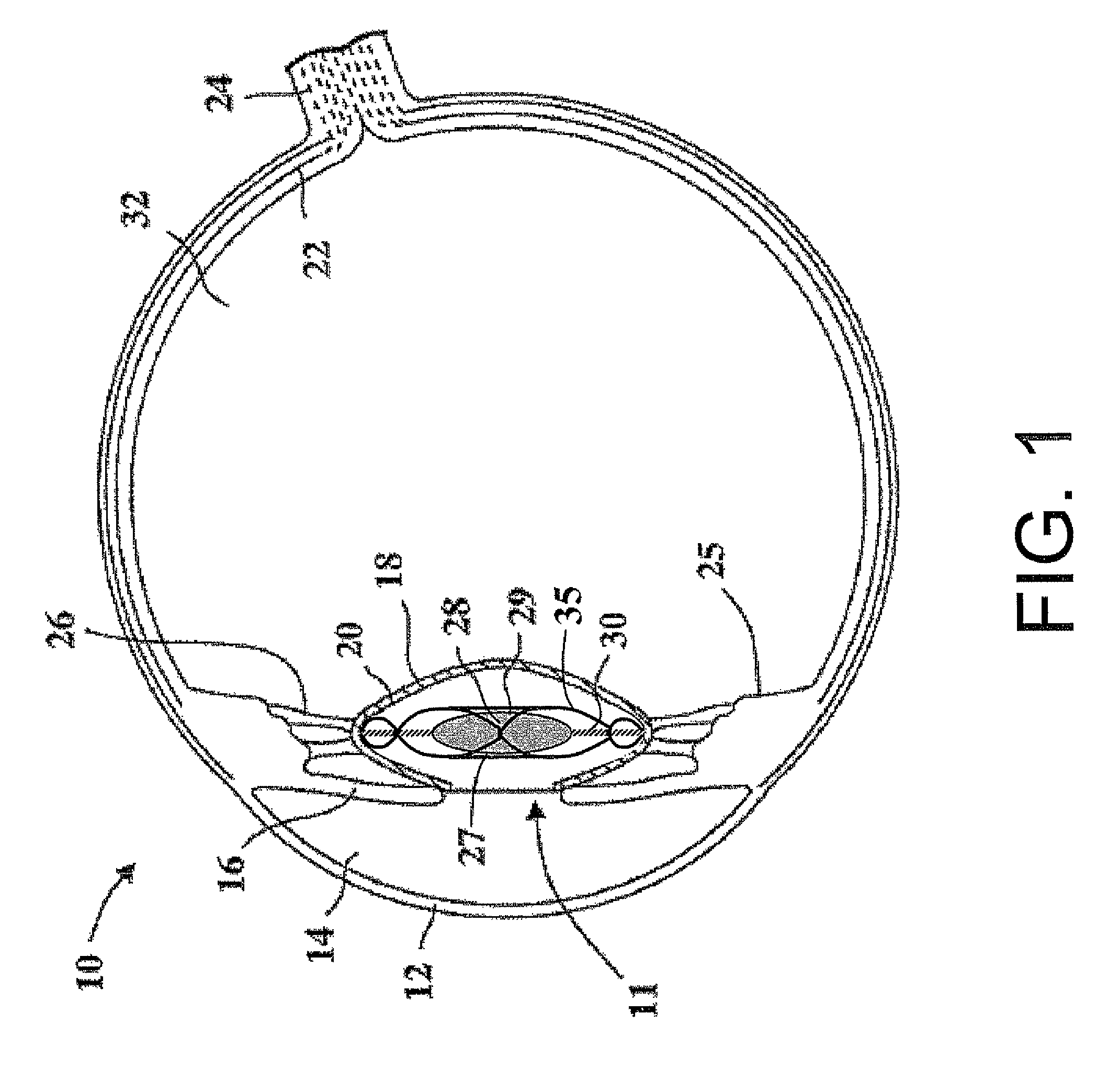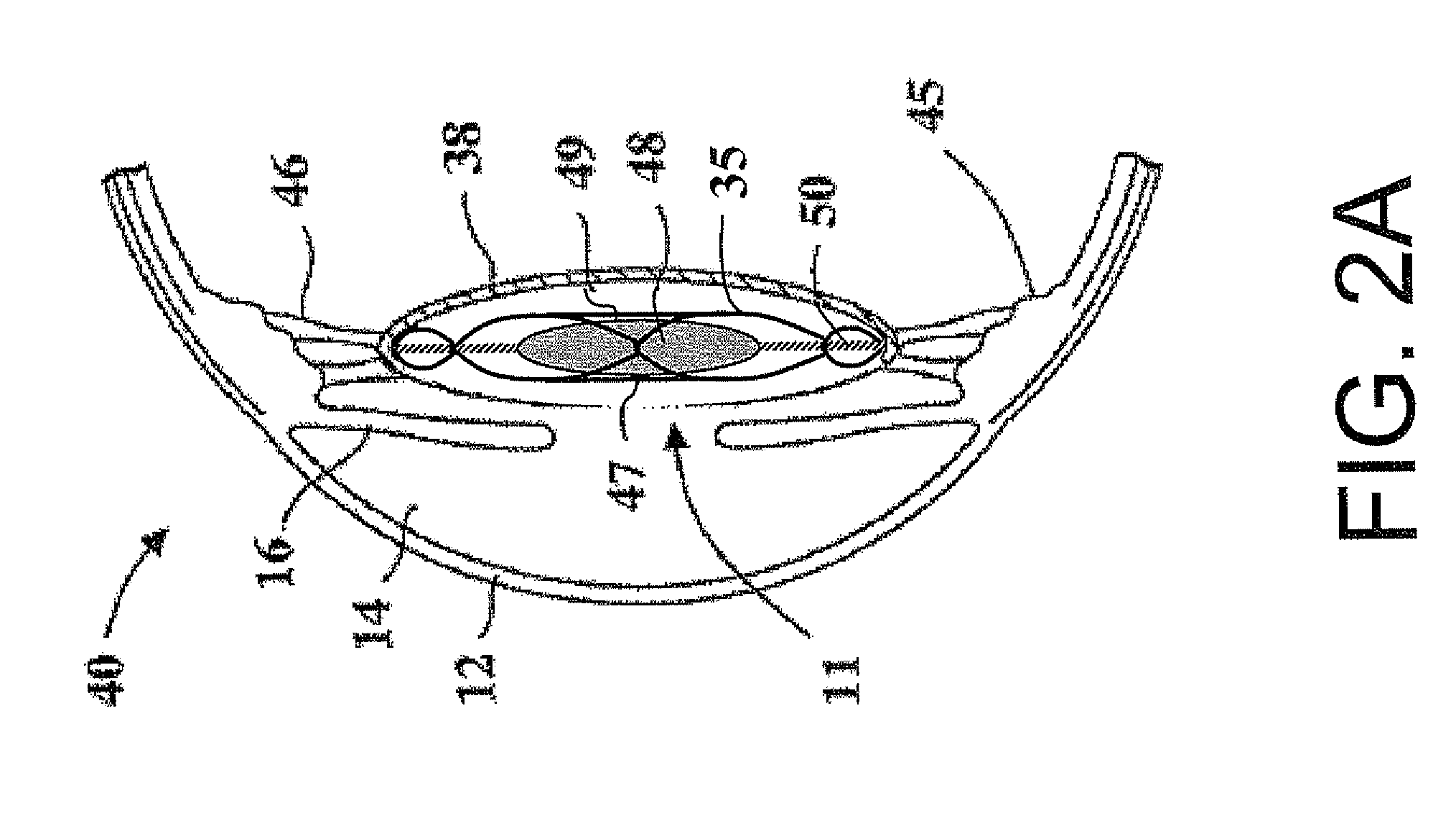Intraocular lens and capsular ring
a technology which is applied in the field of intraocular lens and capsular ring, can solve the problems of impaired vision or blindness, human eye damage, and impaired vision of people,
- Summary
- Abstract
- Description
- Claims
- Application Information
AI Technical Summary
Benefits of technology
Problems solved by technology
Method used
Image
Examples
Embodiment Construction
[0040]As described above, in a healthy human eye the natural lens is housed in a structure known as the capsular bag. The capsular bag is driven by a ciliary muscle and zonular fibers (also known as zonules) in the eye, which can compress and / or pull on the capsular bag to change its shape. The motions of the capsular bag distort the natural lens in order to change its power and / or the location of the lens, so that the eye can focus on objects at varying distances away from the eye in a process known as accommodation.
[0041]For some people suffering from cataracts, the natural lens of the eye becomes clouded or opaque. If left untreated, the vision of the eye becomes degraded and blindness can occur in the eye. A standard treatment is surgery, during which the natural lens is broken up, removed, and replaced with a manufactured intraocular lens. Typically, the capsular bag is left substantially intact in the eye, so that it may house the implanted intraocular lens.
[0042]Because the ...
PUM
 Login to View More
Login to View More Abstract
Description
Claims
Application Information
 Login to View More
Login to View More - R&D
- Intellectual Property
- Life Sciences
- Materials
- Tech Scout
- Unparalleled Data Quality
- Higher Quality Content
- 60% Fewer Hallucinations
Browse by: Latest US Patents, China's latest patents, Technical Efficacy Thesaurus, Application Domain, Technology Topic, Popular Technical Reports.
© 2025 PatSnap. All rights reserved.Legal|Privacy policy|Modern Slavery Act Transparency Statement|Sitemap|About US| Contact US: help@patsnap.com



